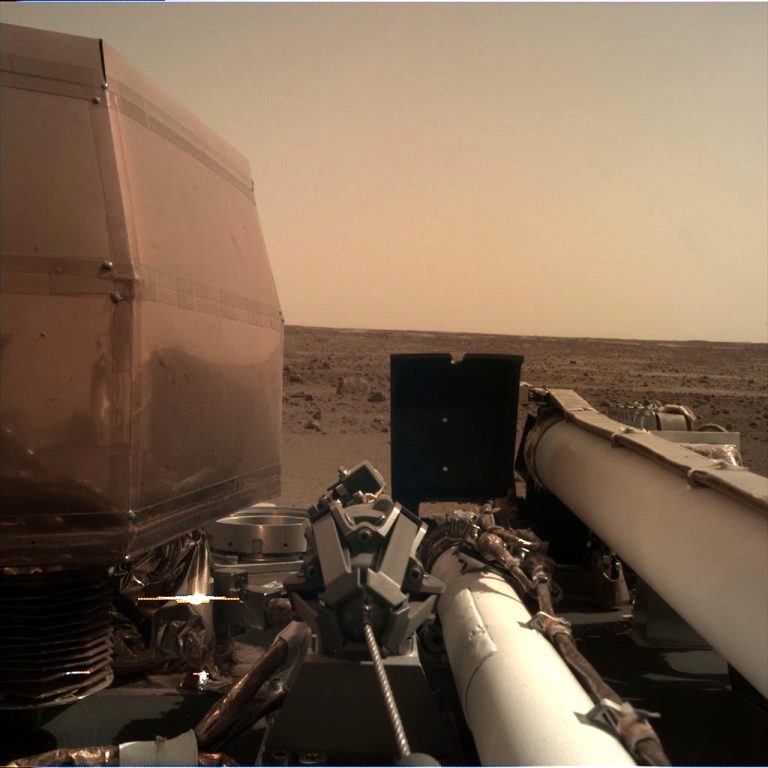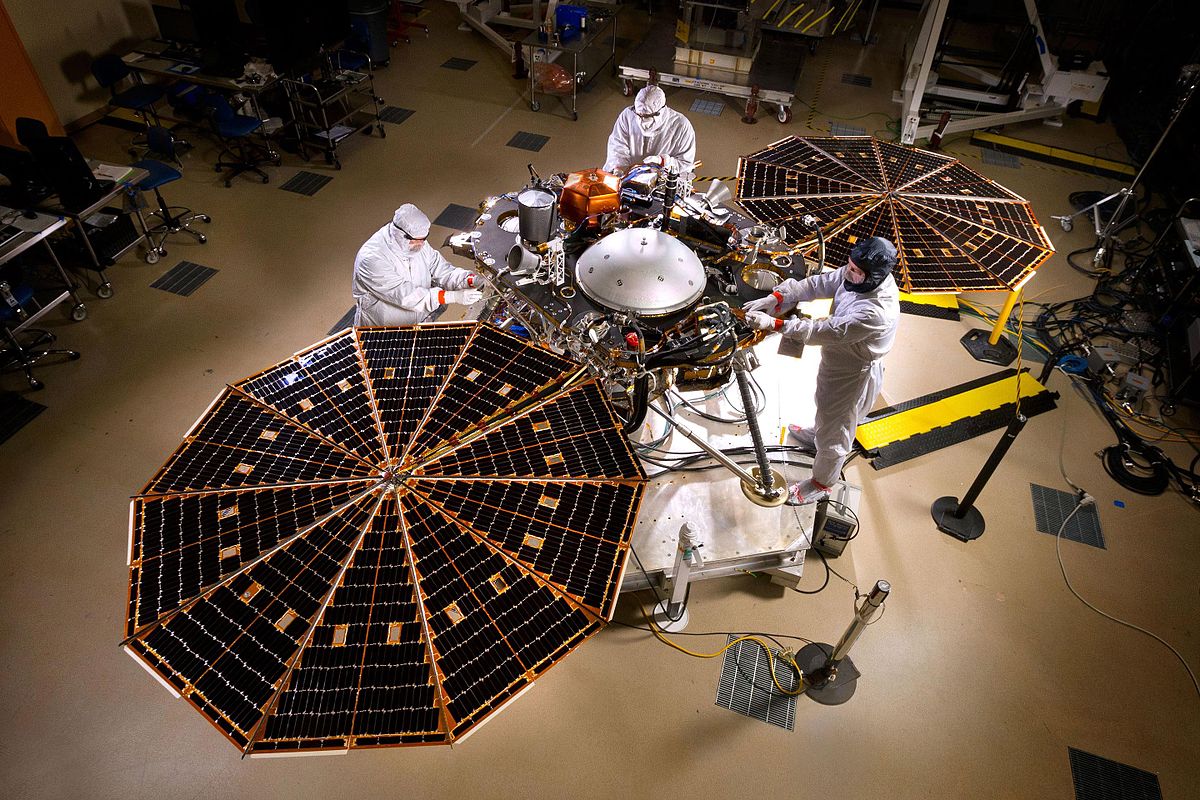NASA landed a probe on Mars, InSight. This lander can collect unmatched information about the internal structure of the red planet, says Delft planet expert Daphne Stam.
InSight being assembled in a cleanroom. (Photo: Nasa)
On 26 November, at approximately 21:00 European time, InSight successfully touched down on the surface of Mars. InSight was launched on 5 May 2018 from Vandenberg Air Force Base in California and was set on a Mars-bound trajectory for a journey that would last six months. InSight is now only the eighth probe that humanity has ever landed on the Martian surface and its goal is to collect data regarding the internal structure of the planet.


Cruising to Mars is a feat in itself, but landing on the surface is even more challenging. Dr Daphne Stam of the Faculty of Aerospace Engineering, mentions just how hard the final Entry, Descent and Landing (EDL) phase is. The lander must go from orbital velocity to a standstill in a matter of minutes. Mars’ atmosphere is much thinner than Earth’s. To make it even more challenging, dust storms make Mars’ atmospheric properties variable, making predictions harder.
And what about the actual touchdown? Many past missions relied on encapsulating the probe in an elastic shell that could bounce on the surface to ensure a smooth landing. However, Dr Stam explains that “if you are bouncing and hit a rock, the capsule will just slide off the rock. But this cannot happen with a powered landing”. A different choice was thus made for InSight, which performed a powered landing. The lander autonomously picked the exact landing zone while descending.
Insight is the first lander that operates a drill
Dr Stam continues. “Apart from the mean density of the planet, we do not know much about the structure of Mars”. Now that InSight is on the surface, its main mission is to gather information about the internal structure of the red planet. So how will InSight do this? “This lander is different to other missions.” One difference is that it operates a drill. It is the first probe to do so.
Europe’s ExoMars mission
By piercing a hole in the surface, the probe can measure the sub-surface temperature at various depths. This allows scientists to understand how heat flows within the internal structure of Mars and how the planet reacts to heat coming from external sources such as the Sun. In the future, more missions will drill into the surface, such as Europe’s ExoMars mission. This mission, planned to launch in 2020, will look for traces of organic material to indicate the presence of life, in the past or now.
Mars quakes
The second key instrument is a seismometer. Here on Earth, seismic waves have enabled science to obtain information on the planet’s structure down to the core. The same can be done on Mars. InSight will listen to seismic waves (Mars quakes) propagating through the planet and how they interact with the planet itself. Dr Stam says that this will be the first of a series of missions that space agencies will launch to bring multiple seismometers to the surface, thus generating a network to provide detailed information on Mars’ seismic activity and structure.
First results
After landing, the vehicle will not yet be operational. Testing must be conducted on the various instruments and systems, and Dr Stam is unsure when the first results will be released. However, it is safe to assume that the data will tremendously enhance science’s understanding of the red planet. This new mission will provide information from a new, ground-breaking perspective in the context of the ongoing efforts to explore and understand Mars.
NASA video of InSight’s landing on Mars
Giulio Dacome / Stagiair



Comments are closed.